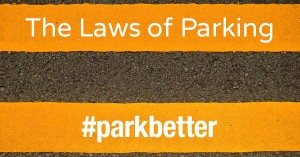 Our Parkbetter campaign is all about helping UK drivers become parking experts. We know ‘you’ are brilliant at parking, it’s the others we have to convert!
Our Parkbetter campaign is all about helping UK drivers become parking experts. We know ‘you’ are brilliant at parking, it’s the others we have to convert!
Below is a quick run through of some parking laws, as it's never a bad idea to refresh your memory when it comes to these laws, and there might be something you’ve forgotten.
Yellow lines
Drivers are often confused, or seen ignoring, double and single yellow lines. Double yellow lines indicate that you can never park in that area. Single yellow lines are more flexible, and allow parking within certain times. However, when you can park on a single yellow line, and for how long, depends on the local authority.
Always look for an accompanying sign for clarification. Yellow lines on the curb itself referred to loading and have the same distinction between double and single as on the road: double means never, single means only between specific times.
Cycle lanes, pedestrian crossings and dropped curbs
You can never park on, or across these areas. This is because doing so could put other people in danger. Cycle lanes and pedestrian crossings are used to keep cyclists and pedestrians out of harm's way when it is necessary for them to be near busy roads.
Parking on a pedestrian crossing or in a cycle lane forces users out into the road, where they could come to harm.
Blue Badges
Blue Badge holders are able to ignore certain restrictions for limited periods of time. They can park on single or double yellow lines for up to 3 hours and do not have to pay a charge at Pay and Display car parks owned by local councils.
However it is important to remember that a Blue Badge is issued to a person and not a vehicle. Blue badge benefits only apply to the holder, meaning carers, friends or family members using their vehicle will not be able to use the benefits of the badge.
Learn the rules, keep safe, avoid fines
Once you have passed your test, it's not surprising that a lot of the Highway code that you revised so hard gets pushed to the back of your mind or forgotten.
But in many cases the restrictions and regulations are in place to ensure the safety of yourself and others. No one likes getting landed with expensive parking fines either, so the best way to avoid both these problems is to always know when and where you can or cannot park.
The rules may seem frustrating, but they are there for a good reason: controlling where people can park avoids congestion, prevents vital access points from being blocked off, allows businesses and public transport to do their jobs, and reduces the risk of accidents.
Think of the benefits if we can get more people to #parkbetter If you have seen an example of good or bad parking then why not upload it to our Facebook page – you could win a parking sensor kit!
